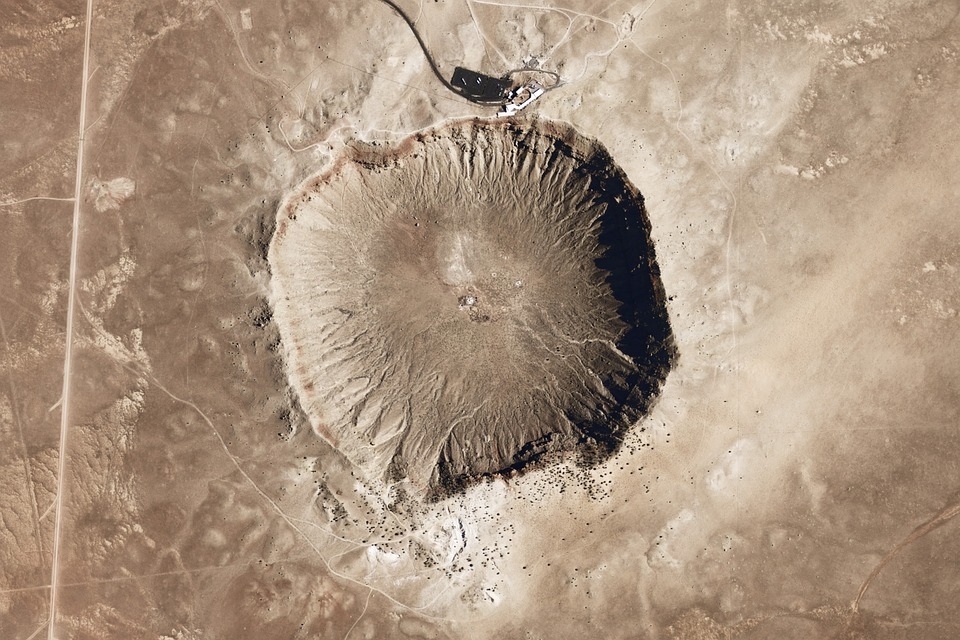Scientists and space enthusiasts alike have been looking for an answer to one of the biggest mysteries about space which is whether or not there is life outside Earth. A new study suggests that alien life on Mars may have been brought upon by meteor collisions on the Red Planet.
According to a study published in the journal Astrobiology, the theory of life on planets being brought by meteor collisions would most likely be true. Lead author and planetary scientist Gordon Osinski of Western University says that space agencies like NASA and the European Space Agency or ESA should focus on impact craters on planets like Mars to find traces of alien life.
“There are a lot of hypotheses for where life started on Earth and where we should look for life on Mars, but we are actually overlooking a major geological force and a key habitat in understanding the origin of life and that’s meteorite impacts and their resulting craters. If you ask anyone to imagine what happens when you have kilometer-sized chunks of rock hitting the Earth, it’s typically destructive,” said Dr. Osinski.
Dr. Osinski also noted the asteroid collision that caused the extinction of the dinosaurs millions of years ago and said that while it was destructive, it also brought on the fundamental components of life. The impact craters in turn, would also create the habitat for life to thrive and grow.
NASA has launched its Perseverance Rover, which is now on its way to the Red Planet. The rover will be exploring the terrain for signs of life when it touches down on February 2021.
Previously, NASA has also released concept art of an exoplanet known as Proxima B found in the Proxima Centauri system. The concept art visualizes what the surface of this Earth-like exoplanet may look like, showing a barren and rocky terrain with the Proxima Centauri star on the horizon.
With Proxima B being the same size as Earth while orbiting a red dwarf star, it raises the question of whether or not it can host life. The distance between Proxima B and the red dwarf star allows for liquid water to exist on the surface. Water is one of the fundamental components for life. But despite having liquid water, it has yet to be seen whether or not alien life exists.



 Customizing mRNA is easy, and that's what makes it the next frontier for personalized medicine − a molecular biologist explains
Customizing mRNA is easy, and that's what makes it the next frontier for personalized medicine − a molecular biologist explains  Six space missions to look forward to in 2024
Six space missions to look forward to in 2024  Synthetic human embryos let researchers study early development while sidestepping ethical and logistical hurdles
Synthetic human embryos let researchers study early development while sidestepping ethical and logistical hurdles  Why some people don't trust science – and how to change their minds
Why some people don't trust science – and how to change their minds  Why now is the time to address humanity’s impact on the moon
Why now is the time to address humanity’s impact on the moon  Tatahouine: 'Star Wars meteorite' sheds light on the early Solar System
Tatahouine: 'Star Wars meteorite' sheds light on the early Solar System  Spacesuits need a major upgrade for the next phase of exploration
Spacesuits need a major upgrade for the next phase of exploration  The mystery of consciousness shows there may be a limit to what science alone can achieve
The mystery of consciousness shows there may be a limit to what science alone can achieve  The brightest object in the universe is a black hole that eats a star a day
The brightest object in the universe is a black hole that eats a star a day  What is minoxidil, the anti-balding hair growth treatment? Here’s what the science says
What is minoxidil, the anti-balding hair growth treatment? Here’s what the science says  Dark energy is one of the biggest puzzles in science and we're now a step closer to understanding it
Dark energy is one of the biggest puzzles in science and we're now a step closer to understanding it  The brain is the most complicated object in the universe. This is the story of scientists’ quest to decode it – and read people’s minds
The brain is the most complicated object in the universe. This is the story of scientists’ quest to decode it – and read people’s minds  Genetic diseases: How scientists are working to make DNA repair (almost) a piece of cake
Genetic diseases: How scientists are working to make DNA repair (almost) a piece of cake  Archeoastronomy uses the rare times and places of previous total solar eclipses to help us measure history
Archeoastronomy uses the rare times and places of previous total solar eclipses to help us measure history 





























